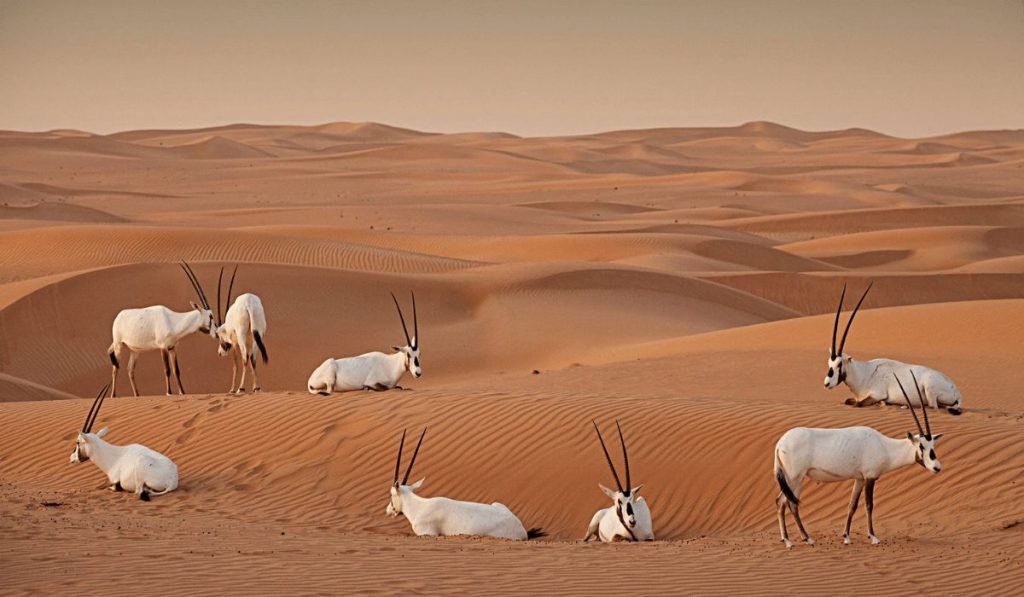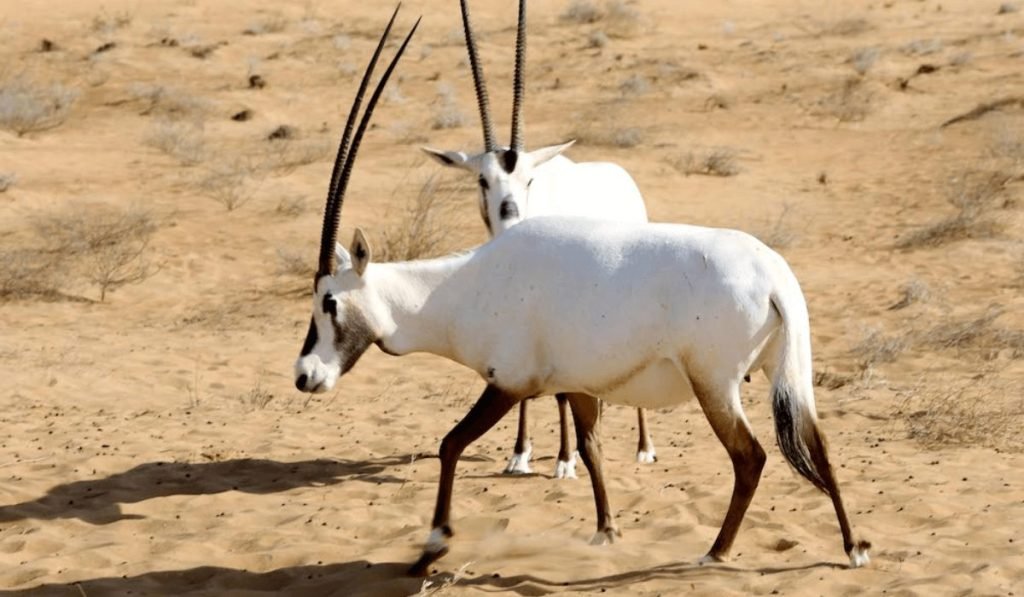The Dubai Desert Safari Area, renowned for its captivating landscapes and unique wildlife, holds immense ecological significance. The conservation of this precious ecosystem is crucial to maintain the delicate balance of nature and protecting the diverse species that call this desert home. In this comprehensive article, we will delve into the strategies and initiatives implemented by the Dubai government to ensure the conservation of wildlife in the Dubai Desert Safari Area. By exploring government initiatives, wildlife monitoring, and research, protected areas, threats faced by wildlife, conservation strategies, collaboration, and success stories, we will gain insights into the holistic approach employed to safeguard the rich biodiversity of this remarkable desert landscape.
The Dubai Desert Safari Area: A Unique Ecosystem

The Dubai Desert Safari Area encompasses a vast expanse of desert, characterized by varying habitats and breathtaking natural beauty. This remarkable ecosystem serves as a home to a diverse range of wildlife species. From elusive desert foxes and graceful gazelles to the iconic Arabian oryx and numerous bird species, the Dubai Desert Safari Area is a sanctuary for biodiversity. The unique desert conditions, extreme temperatures, and limited water resources pose challenges to wildlife survival, making conservation efforts paramount.
Government Initiatives for Wildlife Conservation
Recognizing the significance of wildlife conservation, the Dubai government has implemented a range of initiatives to protect the fragile ecosystem of the Dubai Desert Safari Area. Stringent laws and regulations have been enacted to safeguard wildlife and their habitats. These measures ensure that human activities, including urbanization and land development, are carefully managed to minimize their impact on the natural environment. The government’s commitment to wildlife conservation is demonstrated through the allocation of resources, the establishment of protected areas, and collaboration with various stakeholders.
Wildlife Monitoring and Research
Effective wildlife conservation relies on accurate monitoring and comprehensive research. The Dubai Desert Safari Area benefits from robust monitoring programs that employ various techniques, including satellite tracking, camera traps, and on-ground surveys. Through these methods, scientists and conservationists gather data on species distribution, behavior, and population dynamics. These insights aid in understanding wildlife patterns, identifying potential threats, and formulating targeted conservation strategies. Additionally, research initiatives contribute to the body of scientific knowledge, supporting evidence-based decision-making for wildlife management and conservation.
Wildlife Habitats and Protected Areas
The Dubai Desert Safari Area encompasses diverse habitats, each playing a crucial role in supporting the survival of wildlife species. From expansive sand dunes to rocky outcrops, oasis ecosystems to salt flats, these habitats offer resources and shelter for a wide range of plants and animals. To protect these vital habitats, the government has identified and established protected areas within the Dubai Desert Safari Area. These protected areas serve as sanctuaries, preserving critical wildlife habitats and enabling the flourishing of species. The conservation of these areas is essential to maintain the ecological balance and promote biodiversity conservation.
Threats to Wildlife in the Dubai Desert Safari Area

While efforts are being made to conserve wildlife in the Dubai Desert Safari Area, several challenges persist. Human encroachment and rapid urbanization pose significant threats to wildlife habitats. The expansion of infrastructure, including roads and buildings, fragments habitats and disrupts animal migration patterns. Climate change further exacerbates the challenges faced by wildlife in the desert. Rising temperatures, water scarcity, and increased frequency of extreme weather events have a profound impact on the delicate desert ecosystem. Additionally, poaching and the illegal wildlife trade pose a severe threat to endangered species and disrupt the ecological balance of the area.
Conservation Strategies and Initiatives
To address these threats and ensure the long-term survival of wildlife, the Dubai government has implemented a multi-faceted approach to conservation. These strategies and initiatives encompass various aspects of wildlife conservation, including habitat restoration and management, community involvement and education, wildlife rescue and rehabilitation, and the promotion of sustainable tourism practices.
Habitat Restoration and Management
Habitat restoration and management play a critical role in wildlife conservation in the Dubai Desert Safari Area. Efforts are focused on rehabilitating and restoring damaged habitats to their natural state, ensuring the availability of suitable habitats for wildlife. Techniques such as re-vegetation, erosion control, and water management are employed to restore the balance of ecosystems. Successful projects have demonstrated the positive impact of habitat restoration, allowing wildlife to return to their native habitats and flourish once again.
Community Involvement and Education
Engaging local communities in wildlife conservation is pivotal for the success of conservation efforts. The Dubai government emphasizes community involvement and education to foster a sense of ownership and responsibility among residents and stakeholders. Educational programs, workshops, and awareness campaigns are conducted to highlight the importance of preserving the desert ecosystem and its wildlife. By empowering communities with knowledge, encouraging sustainable practices, and involving them in conservation initiatives, the government builds a strong foundation for long-term conservation efforts.
Wildlife Rescue and Rehabilitation
Injured or distressed wildlife in the Dubai Desert Safari Area receive crucial care and support through dedicated wildlife rescue and rehabilitation efforts. Specialized rescue centers and rehabilitation facilities are equipped with trained professionals who provide medical attention and rehabilitation to injured animals. These facilities play a vital role in aiding the recovery of wildlife, ensuring their successful reintegration into their natural habitats. The stories of rescued and rehabilitated wildlife stand as testaments to the dedication and effectiveness of these initiatives.
Sustainable Tourism and Wildlife Conservation
As a popular tourist destination, the Dubai Desert Safari Area attracts visitors from around the world. Recognizing the potential impact of tourism on wildlife and their habitats, the government promotes sustainable tourism practices. Eco-friendly guidelines are in place to ensure that tourism activities minimize their ecological footprint. By encouraging responsible tourism practices, such as off-road driving restrictions, waste management, and controlled visitor access, the government strives to strike a balance between tourism and wildlife conservation. Sustainable tourism not only allows visitors to experience the beauty of the desert but also supports the preservation of its unique biodiversity.
Collaboration and Partnerships
The conservation of wildlife in the Dubai Desert Safari Area is a collaborative effort. The Dubai government actively engages in partnerships with international organizations, research institutions, and conservation agencies to enhance wildlife conservation efforts. These collaborations facilitate knowledge exchange, sharing of best practices, and joint initiatives aimed at protecting the biodiversity of the desert ecosystem. By harnessing the expertise and resources of various stakeholders, the government strengthens its conservation endeavors and ensures a unified approach to safeguarding wildlife.
Success Stories in Wildlife Conservation
The conservation efforts in the Dubai Desert Safari Area have yielded several success stories, showcasing the positive impact of dedicated conservation measures. Notable examples include the successful recovery of the Arabian oryx population, which was once on the brink of extinction. Through rigorous conservation programs, including breeding and reintroduction efforts, the population of this iconic species has significantly increased, demonstrating the effectiveness of conservation initiatives. These success stories serve as inspiration and motivation to continue striving for the preservation of the desert’s unique biodiversity.
Conclusion
The conservation efforts in the Dubai Desert Safari Area have yielded several success stories, showcasing the positive impact of dedicated conservation measures. Notable examples include the successful recovery of the Arabian oryx population, which was once on the brink of extinction. Through rigorous conservation programs, including breeding and reintroduction efforts, the population of this iconic species has significantly increased, demonstrating the effectiveness of conservation initiatives. These success stories serve as inspiration and motivation to continue striving for the preservation of the desert’s unique biodiversity.

